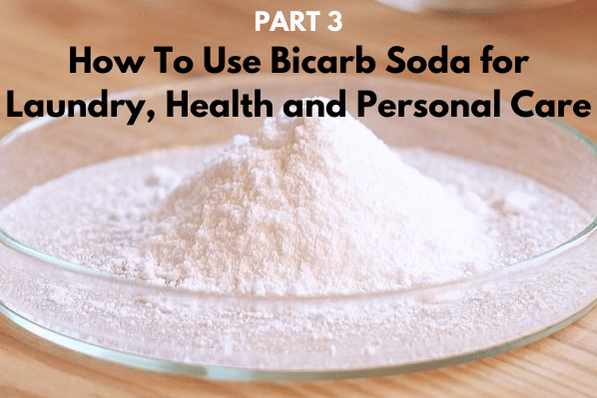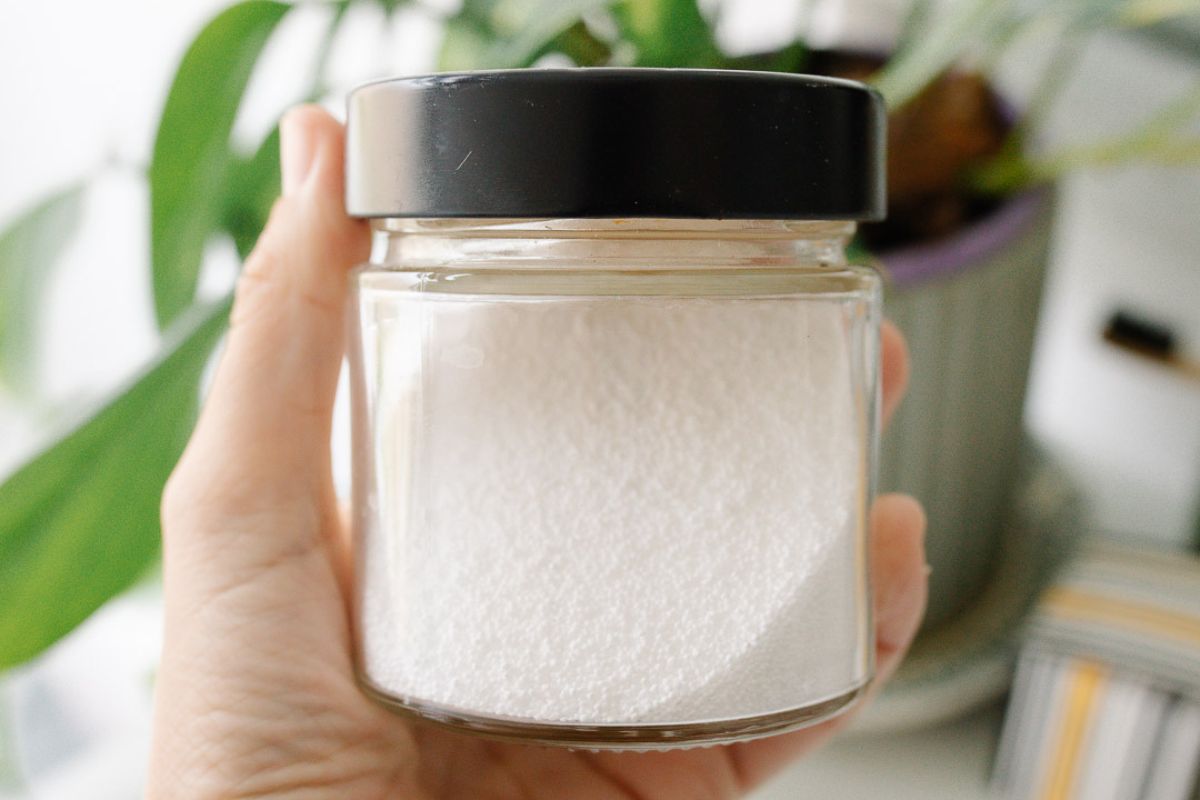One of the first uses of bicarbonate of soda was to create soap, toothpaste and antibacterial mouthwash by the ancient Egyptians. It is a totally safe, natural and eco-friendly ingredient for all kinds of personal care purposes including laundry, oral care, insect bites, sun burn, hair and skin care, deodorant and more. Plus, it is cheap and can be bought from most bulk food stores without plastic packaging to reduce your household waste. Learn how to use bicarb soda for laundry, health and personal care in this article.
If you haven't already, be sure to read our PART 1 bicarb article: What Is Bicarbonate of Soda?

1. How to Use Bicarb Soda for Laundry
- Hypoallergenic laundry powder: use 1 cup bicarb in place of laundry powder for an effective wash that won't irritate sensitive skin and leave your clothes fresh and soft. Alternatively add 1/2 cup to your regular wash to improve the performance of your regular washing powder/liquid for extra power or to be able to use less regular detergent.
- Stain removal: dampen the stained fabric with cold water and rub bicarb soda into it with an old toothbrush. Leave to soak for an hour (repeat if necessary) and then wash as normal. Suitable for blood, vomit, urine, sweat, citrus juice, rust and other stains.
- Fabric softener: bicarb washes your clothes and also works as a fabric softener. Add 1/2 cup mixed with a little water into the conditioner drawer of your washing machine. To make up a mix for later, mix two parts water, one part bicarb and one part vinegar and store in a glass jar (after it's finished fizzing) to use 1/4 cup in the fabric softener drawer of your washing machine.
- Cloth nappies: soak dirty nappies in bicarb and water overnight and then wash as normal. This will curb smells and remove stains and bacteria.

2. How to Use Bicarb Soda for Personal Care
- Soothe allergic skin, sunburn, insect bites, acne and razor burn by adding 2 cups bicarb to your bath water or make a bicarb paste with a little water and smear onto affected areas. Allow to dry for 5-10 minutes to relieve itching and/or soothe skin.
- Exfoliate skin with a paste of three parts bicarb to one part water. Use as a facial scrub and rinse with cool water.
- Moisturise your skin while doing the dishes by adding a little bicarb soda to your washing up water.
- Revive lifeless hair by adding 2 teaspoons of bicarb to your shampoo to help condition your hair and remove any build-up of products that may be leaving your hair feeling greasy.
- Whiten teeth by dipping your wet toothbrush into a little bicarb and brush your teeth as normal. Do this once per week to remove teeth stains. Do not swallow and avoid doing this if you have any gum rawness/irritation.
- Make a breath freshener with 1/2 teaspoon bicarb mixed with water to gargle (do not swallow) to kill germs and leave your mouth feeling fresh.
- Relieve tired, sore or smelly feet by soaking in a foot bath containing 1 cup of bicarb in water - you'll be amazing how much better they feel!

3. How to Use Bicarb Soda for Health
- Relieve itchy eyes by mixing 1/2 teaspoon of bicarb into half a glass of water and use as an eyewash.
- Relieve indigestion or heartburn by sprinkling a little bicarb on your food or adding 1 teaspoon bicarb to a glass of water and drinking. This will help relieve bloating, calm stomach discomfort/churning and stop heartburn.
- Reduce a fever by soaking in a cool (but not cold) bath with 2 cups of bicarb added.

Read back to Parts 1 and 2 of our Bicarb article series to learn more uses of this cheap, safe and eco-friendly solution!
PART 1: What Is Bicarbonate of Soda?
PART 2: How to Use Bicarb Soda for Household Cleaning, Gardening and More
A great resource for even more information is the book 'Bicarbonate of Soda: Hundreds of Everyday Uses' by Diane Sutherland, Job Sutherland, Liz Keevill and Kevin Eyres






sandra g
June 29, 2025
I use bi-carb for underarm pong. I just slap some on as I would talc. 100% perfect.